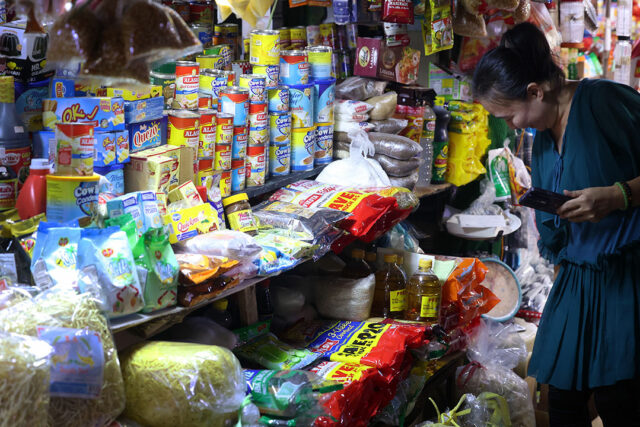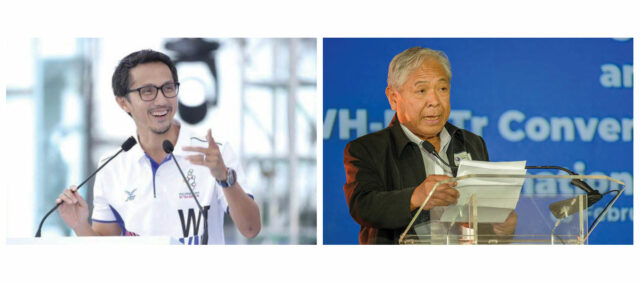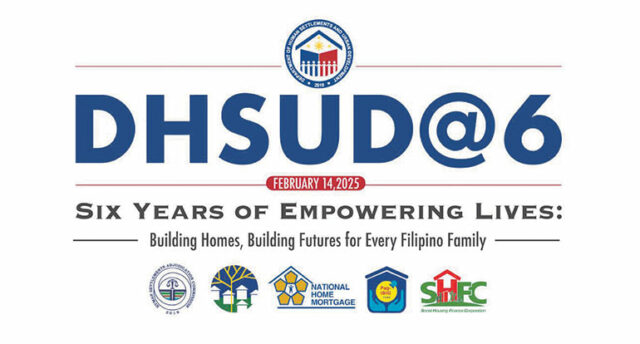By Patricia B. Mirasol, Multimedia Producer
HEART DISEASE is a leading cause of death in the Philippines, with risk factors such as physical inactivity, poor diet, and stress contributing significantly to its prevalence. Since employees spend at least a third of their weekdays at work, corporate wellness programs — which typically include health screenings, stress management, and fitness challenges — have the potential to enhance the heart health of Filipino workers.
It’s part of the healthy settings approach, said Sean Paolo Ohrelle B. Aquino, medical officer III of the Department of Health’s Disease Prevention and Control Bureau.
“From the school setting to the workplace setting to the community setting, what we want to target sana is, kung saan (is where) people spend most of their time like in schools, iyung mga bata dun (the children there) will be provided services.”
 Wellness initiatives like regular blood pressure readings can likewise be integrated in occupational health, he said during a Jan. 17 Zoom call.
Wellness initiatives like regular blood pressure readings can likewise be integrated in occupational health, he said during a Jan. 17 Zoom call.
“The Health department doesn’t work in a silo,” he said. “We need close collaborations with the Civil Service Commission and the Department of Labor and Employment for this whole-of-society approach we’re talking about,” he said.
Data from a United Nations joint mission in 2018 found that non-communicable diseases (medical conditions that are not caused by infections and are not contagious) cost the Philippines P756.5 billion per year. This figure represents 4.8% of the gross domestic product in 2017.
“Heart diseases are captured under the broader umbrella of non-communicable diseases,” Dr. Aquino added. “There is no separate data for heart diseases alone.”
‘HEALTHIER U’
Among the businesses with regular employee health programs is Unilever Philippines, Inc.
“We have about 20 company policies and programs in a year that support employee wellness,” its head of human resources, Geeta Royyuru, said in a Jan. 10 interview.
Included in the initiatives of the consumer goods multinational company is a 24/7 employee assistance program with counselors for both employees and their dependents, Ms. Royyuru said. Facilities like gyms, nap rooms, and daycare services are also available for all staff.
It also has a voluntary program called “Healthier U” where employees take tests and use screening tools which the company’s medical team analyzes for associated risks. Employees are tagged as Red (those with chronic diseases or high-risk factors), Amber (those at risk of chronic diseases with a few identified high-risk factors), or Green (those with zero to minimal high-risk factors), with the aim of moving more of those tagged Red and Amber to Green through follow-up check-ups and recommendations.
From 2023 to 2024 there was a 33% increase in Healthier U enrollees in the Philippines. The company told BusinessWorld that 8% of those with cardiovascular-related chronic diseases showed an improvement in their blood pressure.
Lemuel B. Lucas, a customer operations business partner at the company, said “Healthier U” was an eye-opener.
“Because of my high cholesterol levels, I was advised to consider lifestyle changes and prompted to seek the help of a nutritionist…,” he told BusinessWorld via e-mail on Jan. 28. “Apart from losing 45 lbs., I’ve also brought down my cholesterol levels and will even be running my first marathon in February!”
To promote employee health, there are also changes being made in the cafeterias, Ms. Royyuru told BusinessWorld.
“We continuously audit the food that’s served in all our canteen spaces across our facilities,” she said. “This has led to the introduction of simple things, like less oily food, and the introduction of more veggies and varieties of fish rather than just meat.
“We work with our union and employee representatives in food tasting and make sure there is a habit-building journey, and that it doesn’t feel forced,” she added.
‘GCLUBS’
Globe Telecom, Inc., meanwhile, has a holistic approach to wellness, according to its vice-president for people experience Nicolette S. Bambao.
“We make sure to fulfill the four pillars: physical, socio-emotional, financial, and purpose,” she said.
Apart from programs that support each of the pillars, the telecommunications provider also has a myChoice program, which allows employees to customize their benefits according to their needs. Among the options for 2025 are wearables, vouchers for medicines and vitamins, and spa packages.
In 2024, the company also expanded its annual physical examination by adding screenings for cardiovascular, kidney, colon, and hypertension-related diseases, and diabetes.
“Globe promotes wellness through similar interests for ka-Globes to gather, experience, and share in non-work-related clubs,” Ms. Bambao said in a Jan. 27 e-mail to BusinessWorld.
The majority of the “GClubs,” as they are called, are sports-related: “We have competitions in basketball, volleyball, football, badminton, golf, and dance within and outside Globe.”
IMPACTFUL EDUCATION
The Philippine Statistics Authority reports that the top three causes of death in the country from January to April 2024 were ischemic heart diseases, neoplasms, and cerebrovascular diseases. These were also the leading causes of death in the same period in 2023.
Ischemic heart diseases (which happen when the vessels that supply blood to the heart muscle become narrowed or blocked) accounted for 20.2% of the total deaths nationwide.
While age, gender, and family history are risk factors that are beyond people’s control, sleep, diet, and physical activity are among the factors that are controllable.
Regular exercise, healthy eating, and routine health checks can reduce the risk of heart disease, said Rodney M. Jimenez, a cardiologist and president of the Philippine Heart Association (PHA).
But according to him, the number one component in a workplace wellness program that needs to be present to keep employees’ hearts healthy is “impactful education.”
“Number one is education, number two is screening… how can you identify people who are at high risk if you do not screen them, interview them, and then check their cholesterol level?” Dr. Jimenez asked in a Zoom interview on Jan. 9.
Despite its reputation, cholesterol isn’t all bad. Cholesterol is a substance that the body needs to build cells and make vitamins and other hormones. There are two types of cholesterol: LDL or the “bad” cholesterol, and HDL, called the “good” cholesterol. Too much of the bad kind, or not enough of the good kind, can eventually lead to a heart attack or stroke.
Cholesterol levels are one of the controllable factors.
“There’s a certain cholesterol level for each risk factor,” Dr. Jimenez said. “So kung may risk factor na hypertension or diabetes, ganitong level iyung cholesterol mo, and kung wala naman, ganito iyung level (So, if there is a risk factor of hypertension or diabetes, this should be your cholesterol level, and if you don’t have these risk factors, this should be the level).”
Individuals are encouraged to advocate for their own health by keeping in mind “ACTing NOW”:
A – ASCVD (atherosclerotic cardiovascular disease) is a top killer in the Philippines
C – Cholesterol is a key risk but can be managed
T – Take action to lower it fast
NOW – The next heart attack or stroke could be worse — act now to stay protected.
The Philippines doesn’t have any data on the prevalence rates of specific cardiovascular diseases, Dr. Jimenez told BusinessWorld, so the PHA has started a study on the hospitalization rate of acute cardiovascular diseases, he said.
Taking a step towards heart health can be as simple as taking the stairs instead of the elevator, he reminded BusinessWorld.
“Kung one to three [flights of] stairs lang sa office niyo, and kung wala ka namang knee injury (If your office just has one to three flights of stairs, and if you have no knee injury), take the stairs,” Dr. Jimenez said. “Maglagay siguro sa elevator ng sign na (place a sign in the elevator saying), ‘Climbing up the stairs will help prevent heart attack and stroke.’”
‘WELLNESS HEROES’
Two other companies in the Philippines that have corporate wellness programs are TaskUs Philippines, a business outsourcing provider, and Fluor Daniel, Inc., an engineering, procurement, and construction company.
Fluor won at the 2023 Asian Experience Awards for its SWITCH (Sustainable Wellness Initiatives Toward Corporate Health) Wellbeing Program that combines physical fitness with financial security, mental balance, and social connection. One of the initiatives under it is ProErgo, which optimizes workstation design to prevent musculoskeletal disorders. There are also programs for lifestyle-related diseases which include recreational facilities and a weight loss program to help lower cardiac risk factors among the workforce.
Health awareness campaigns are likewise disseminated through e-mail blasts, bulletin board infographics, and lunch-and-learn activities.
TaskUs, on the other hand, has a Wellness Hero Certification Program which enlists volunteer employees and trains them to be “wellness heroes,” or individuals who advocate for their own wellness as well as that of others.
These “heroes” are found across the 13 countries that TaskUs is located in. Each of their certifications is valid for 12 months to ensure people’s safety and service quality and requires additional assessments for renewal.
“If we have more people actively practicing and promoting the use of our wellness resources, we’re expanding the reach of our Wellness + Resiliency team and making the topic of mental health discussions ubiquitous in the workplace,” said Rachel Lutz Guevara, TaskUs’ vice-president for Global Wellness + Resiliency, in a May 2023 post on the company website.
A March 2024 study in Acta Medica Philippina found that employees who participate in corporate wellness programs have a higher physical wellness status than those who didn’t. Employees who were aware of such programs also had a higher mean socio-emotional wellness score (36.2 ± 6.0) than those who were not (34.2 ± 6.0).
A HEALTHY MIND FOR A HEALTHY HEART
Stress management is yet another component of heart health.
Heart health is being promoted through Globe’s mental health webinars and modules, said Globe’s Ms. Bambao.
“The medical coverage of employees includes reimbursements with prescribed psychiatric medicines and consultations with licensed psychiatrists,” she said.
Ms. Royyuru said Unilever’s holistic approach to corporate wellness — which encompasses physical, mental, and emotional well-being — ties in with the company’s purpose of “brightening lives every day.”
“We cannot have unhappy, unhealthy people who cannot be their best self at work,” she said. “How do you expect them to innovate with the best of solutions for our consumers and for themselves, right?
“We have to care for them as individuals with wants and needs… and [who] are at different life stages.”
This article is part of the Unblock Your Heart Health Reporting initiative, supported by the Philippine Press Institute and Novartis, to improve health literacy on cardiovascular diseases. Know your numbers, understand your risks, and consult your doctor — so no Filipino heart is lost too soon. Take control of your heart health today. Visit unblockedmovement.ph for more information.
Eating heart healthy
FILIPINOS’ PENCHANT for salty food and partaking of panghimagas (dessert) after meals pose a risk to one’s heart, Donna L. Lorena, a registered nutritionist-dietitian, said.
High sodium intake negatively affects the heart, she said in a Jan. 10 interview with BusinessWorld. Popular processed meat items like corned beef and hot dogs are not just salty, they are also high in artery-clogging fat.
She suggested that when cooking traditional Filipino fare such as adobo (usually a dish of chicken and/or pork braised in vinegar and soy sauce), to opt for a low-sodium soy sauce variant. When using toyomansi (a mix of soy sauce and the local citrus calamansi) as a sauce, meanwhile, use more calamansi and less toyo.
Portion control is also important, Ms. Lorena said.
She cautioned, however, against eating just one meal a day, as in the case of those who go on 20-hour fasts. When you eat 1,200 calories in one go, she explained, “Your vital organs get stressed… thereby impacting your cardiovascular health. [That’s because] masyadong maraming name-metabolize iyung katawan natin na salt and fat at that time (too much salt and fat is being metabolized by the body at that time).”
The following heart-healthy recipes were shared by Ms. Lorena. — PBM

GINISANG MUNGGO WITH BANGUS
Serves 4
INGREDIENTS:
1 cup munggo (mung) beans, washed and soaked
1 medium-sized bangus (milkfish), cleaned and sliced into 4
1 tablespoon olive oil
1 medium onion, chopped
3 cloves garlic, minced
2 medium tomatoes, chopped
4 cups water
1 cup malunggay (moringa) leaves (or spinach as an alternative)
1 cup diced squash
1 tablespoon low-sodium patis (fish sauce)
1/4 teaspoon ground black pepper
DIRECTIONS:
1. Wash and soak the munggo for at least 4 hours or overnight. Do not skip this step.
2. Pat-dry the bangus slices and season with salt and pepper. Spray with oil and air-fry or bake until brown.
3. Meanwhile, in a sauce pot, sauté onions and garlic until fragrant. Add in squash and cook until slightly brown, then add chopped tomatoes. Let cook for at least 5 minutes.
4. Stir in the munggo and water then let it simmer until the beans are soft and cooked through. Mix in the malunggay leaves or spinach leaves. Cover and let simmer until the leaves wilt.
5. Season with low-sodium fish sauce or salt and pepper. Divide into four bowls. Top with the air-fried bangus. Serve with a cup of lightly packed brown rice.
Notes:
*Always soak beans or lentils of any kind before cooking. Aside from reducing cooking time, this improves digestibility and reduces bloating.
*In the absence of an air-fryer or oven, pan-fry the bangus in oil and dry on a paper towel to reduce excess oil.
Per serving (with 1 cup of brown rice): 621 calories; 85 g carbohydrates; 41 g proteins; 13 g fats

TOFU WITH ENSALADANG TALONG
Serves 4
INGREDIENTS:
2 blocks tofu
1 tablespoon olive oil
1/2 teaspoon garlic powder
1/4 teaspoon paprika
1/4 teaspoon salt
For the Ensaladang Talong:
2 large eggplants
1 tsp olive oil
2 medium tomatoes, diced
1 small red onion, chopped
1 cup pakpako (edible ferns), cleaned and parboiled
1 tablespoon vinegar
1/2 teaspoon low-sodium fish sauce
1/4 teaspoon ground black pepper
DIRECTIONS:
1. Wrap tofu in a paper towel and press down with a heavy item like a chopping board or a heavy pan to squeeze out most of the water. Leave it under the weight for at least 30 minutes.
2. Once dried out, slice the tofu into cubes. Season with garlic powder, salt, and pepper and spray with oil then air-fry or bake until brown and crispy. Set it aside.
3. Wash and pat dry the eggplant and brush with oil. Air-fry or bake until the skin separates from the flesh. Let it cool.
4. Once cooled, peel off the eggplant’s skin. Chop the eggplant and place it in a bowl. Mix in diced tomato, red onion, and parboiled pakpako. Season with vinegar or calamansi juice, low-sodium fish sauce or salt, then ground black pepper.
5. Serve on a plate with air-fried tofu and a cup of lightly packed brown rice.
Note:
*In the absence of an air-fryer or oven, pan-fry the tofu in oil and dry on a paper towel to reduce excess oil.
Per serving (with 1 cup of brown rice): 477 calories; 61 gm carbohydrates; 28 gm proteins; 16 gm fats









 “Globe Business is dedicated to supporting businesses in navigating their digital transformation journey. We help them plot their roadmap to achieve greater digital proficiency and a stronger digital stance. We offer guidance and expertise through our business solution consultants,” KD Dizon, Vice-President and Head of Globe Business, said in a special edition of the BusinessWorld Insights forum.
“Globe Business is dedicated to supporting businesses in navigating their digital transformation journey. We help them plot their roadmap to achieve greater digital proficiency and a stronger digital stance. We offer guidance and expertise through our business solution consultants,” KD Dizon, Vice-President and Head of Globe Business, said in a special edition of the BusinessWorld Insights forum. Globe Business
Globe Business 













